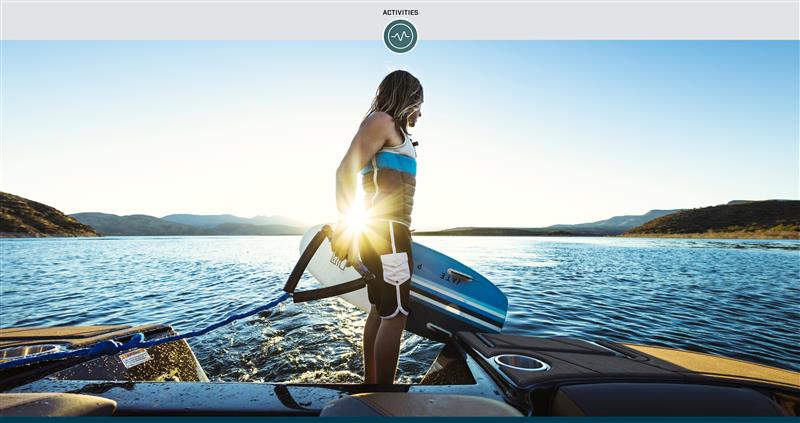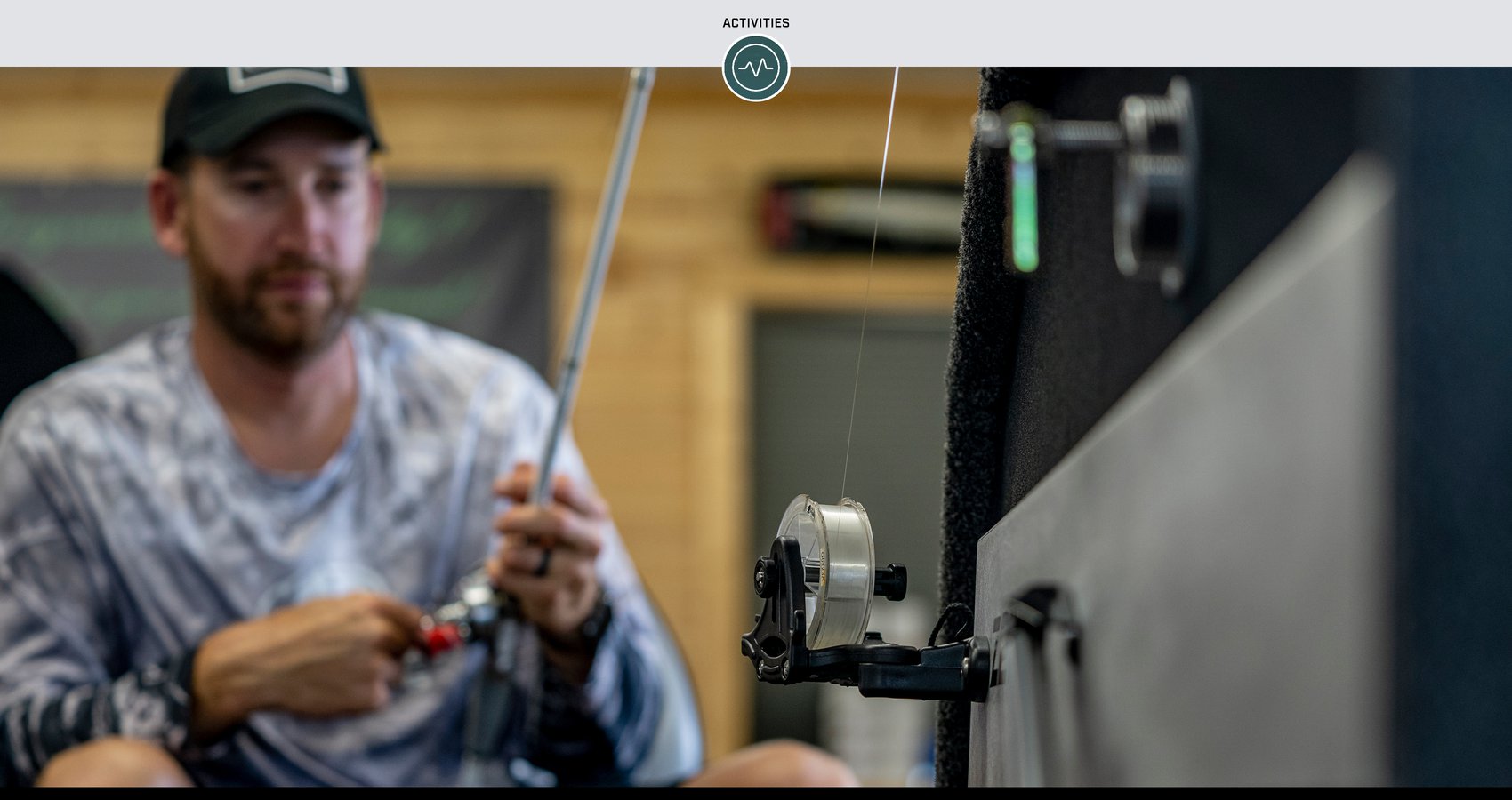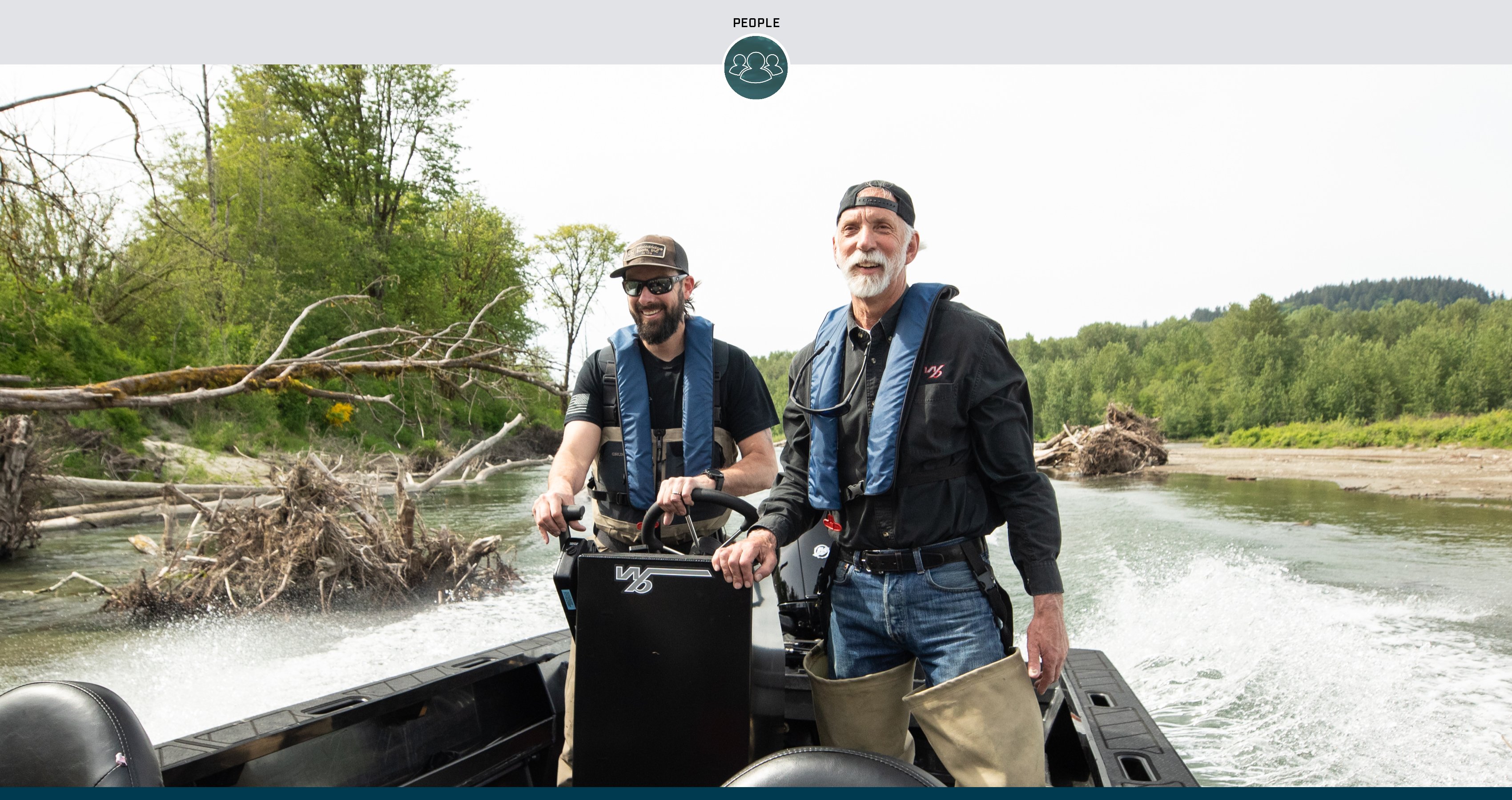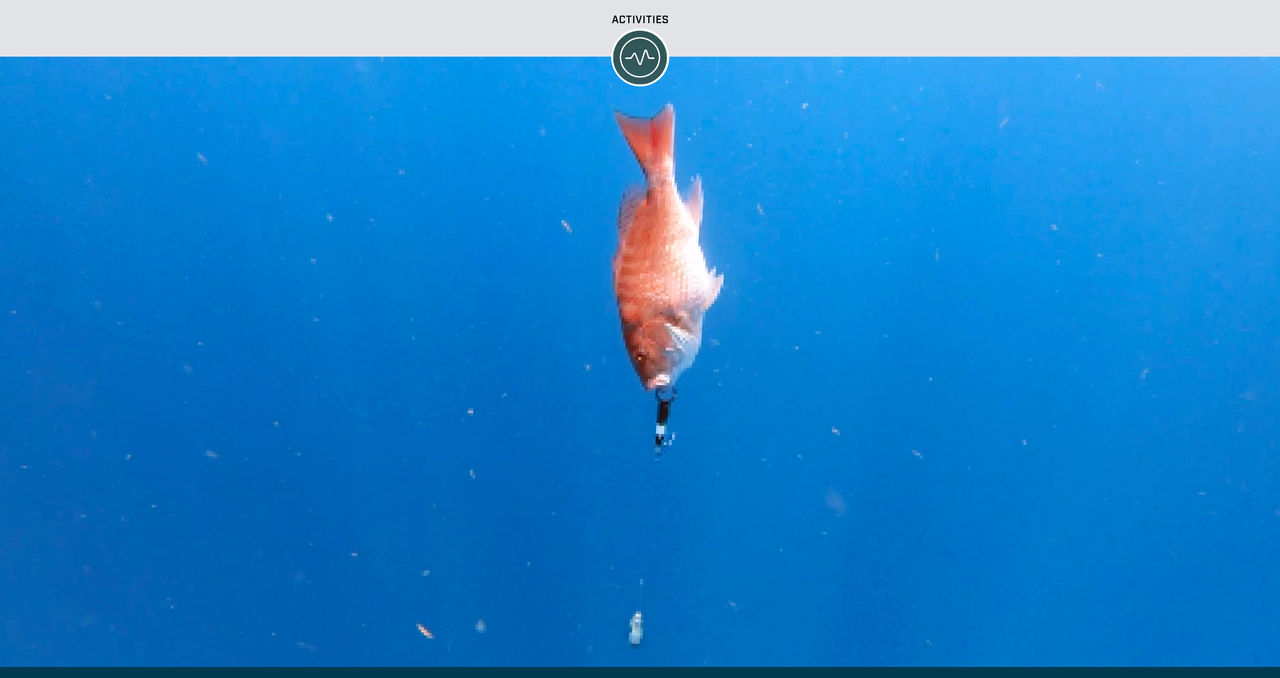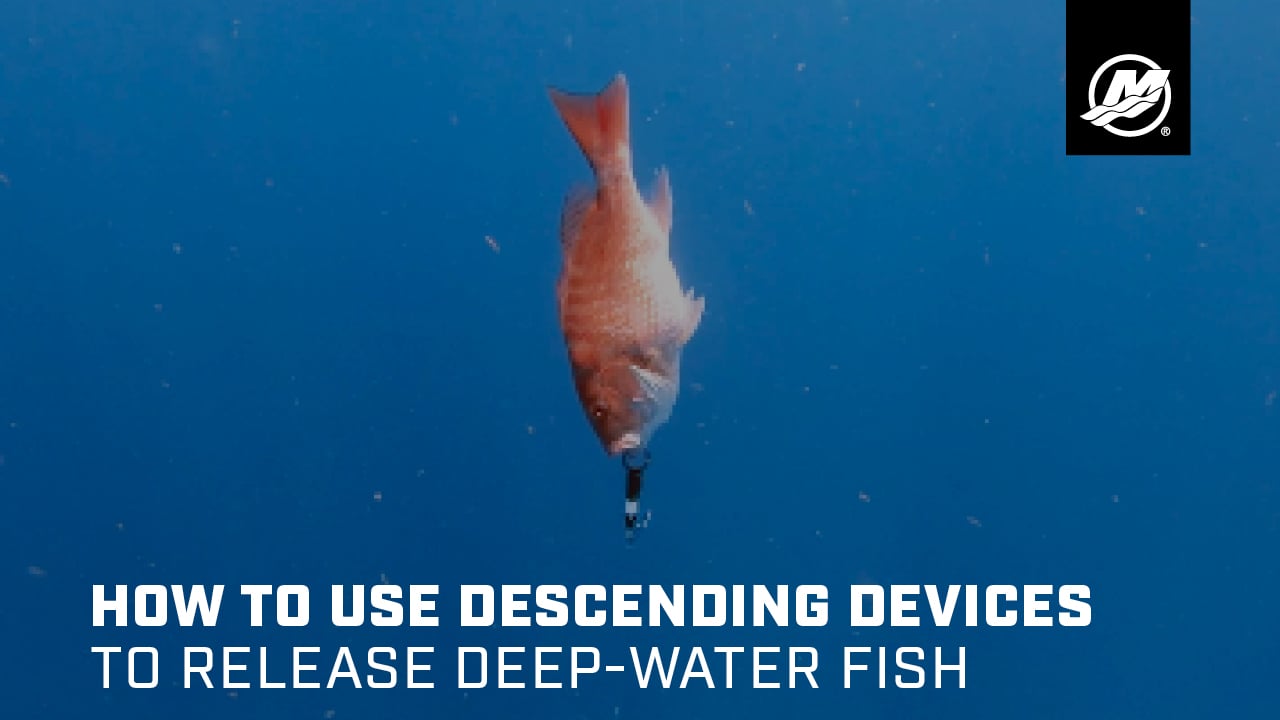One element that makes Gulf of Mexico bottom fishing so appealing is its diversity. You might catch your target species, or you might catch one of its neighbors. For this reason, Gulf anglers need a wide assortment of tools and tackle – including a descending device for safely releasing fish caught from deep water.
To see how Mercury Pro Team member Capt. Tom Rowland, co-host of “Saltwater Experience,” uses a descending device, check out the video below.
Why a Descending Device is Needed
No doubt, bycatch diversity can make the day interesting and enhance the fun, but there is a downside: release mortality. Sadly, not all released fish survive, and the usual culprit for fish caught in deep water is a condition called barotrauma.
The Gulf of Mexico Fisheries Management Council (aka Gulf Council) describes barotrauma as an injury caused by the expansion of gas inside a fish from the rapid pressure decrease that occurs when fish are retrieved from the bottom.
As the Gulf Council explains, barotrauma risk generally starts at 90 feet, but it can occur in waters as shallow as 33 feet. Signs of barotrauma include a distended abdomen, bulging eyes, an everted stomach and bubbling under the scales. In each case, the affected fish typically has trouble swimming back to its deep-water home, making it vulnerable to dolphins, sharks, other fish and seabirds.
Rowland witnesses this issue every season.
“We mostly target mutton snapper offshore, so pretty much any bycatch will suffer barotrauma,” said Rowland. “Genuine American red snapper are our most common by catch, because their season is so short and we often have to release them, but all of the groupers and the smaller snappers, like mangrove snapper, are susceptible.
“Barotrauma seems to affect fish of all sizes. You may have two anglers on the same boat, on the same drop, and one catches a big red snapper and the other catches a small red snapper. One may be fine, but one may come up with its eyes bulging out. Some fish get it a little more than others.”
Taking Action to Help Reduce Release Mortality
To decrease discard mortality, Congress passed the Direct Enhancement of Snapper Conservation and the Economy through Novel Devices (DESCEND) Act of 2020. The DESCEND Act, which took effect January 13, 2022, requires anglers on commercial, for-hire and private recreational vessels to have a venting tool or descending device rigged and ready when fishing for reef fish species in Gulf of Mexico federal waters. (Gulf state agencies require the same.)
A venting tool is essentially a hypodermic needle used to carefully puncture the fish’s side to release internal gas buildup. A descending device literally escorts a fish into the depths where it can readjust to the water pressure from which it came. Options include:
Fish elevator – This is a weighted box or milk crate that is inverted, the fish placed inside, then lowered to the bottom where the fish can swim out. It’s then hauled in by a rope clipped to the crate.
Inverted hook – This one comprises a U- or V-shaped piece of thick wire with a line tie on the top end and a weight at the bottom. The wire is passed through the fish’s bottom jaw (outside-in) so the fish can be lowered to the right depth. Once down, the angler gives the device a gentle tug so the fish slides free. Commercial models are available, or you can make this DIY version shared by the Florida Fish and Wildlife Conservation Commission (Florida FWC).
Lip clamp — Rowland prefers the SeaQualizer, a non-puncturing lip clamp with an attached weight and a mechanism designed to release the clamp at a preset depth. It’s offered in shallow (30, 50, 70 feet), standard (50, 100, 150 feet) and deep (100, 200, 300 feet) models. SeaQualizer suggests 1 to 2 pounds of weight per 10 pounds of fish.
(The DESCEND Act sets a minimum of a 16-ounce weight and a minimum length of 60 feet of line or rope attached to a descending device.)
How to Safely and Quickly Release Deep-Caught Fish
As Rowland notes, descending devices can be deployed on conventional bottom-fishing outfits or electric reels. He prefers braided main line.
“The more weight the better, I say, but that may depend on whether you’re hand cranking versus using an electric reel,” Rowland said.
According to the Florida FWC, research shows that descending devices can significantly increase the long-term survival of released fish. Whichever device you prefer, immediacy is paramount.
“If you’re going to go out and bottom fish in depths where you expect to encounter barotrauma, the best thing is to have a dedicated rod for your descending device,” Rowland said. “The idea is to release the fish as healthy as possible. If you’re going through your tackle, trying to find your descending device, that takes up a lot of time.
“Rather than cutting a rig off one rod and trying to rig your descending device, (by having one rigged on a dedicated rod) all you have to do is unhook the fish, transfer it to the descending device and send it straight down. You’re not in a hurry.”
Educate and Equip
For conservation messaging, Rowland supports Gainesville, Fla., based Return ’Em Right, a multi-entity effort in the Gulf of Mexico led by Florida Sea Grant, University of Florida, Gulf States Marine Fisheries Commission, the NOAA Restoration Center and a coalition of anglers, industry groups, universities, government agencies and nongovernmental organizations that seeks to maintain healthy fish stocks and fishing access.
The $30 million project was selected and funded by the Deepwater Horizon Open Ocean Trustee Implementation Group as part of the Open Ocean Restoration Plan that resulted from the 2010 Deepwater Horizon oil spill.
Central to this project’s mission is educating the angling public on best practices for catch and release and providing the tools to do so. Anglers that complete an online training course are eligible for free release gear (including descending devices). For details, visit returnemright.org
Rowland adds this closing thought: “Even if a fish is not showing signs of barotrauma, I still use a descending device. If you catch them in 200 feet of water, they get down quicker and they have a greater chance of survival.”
For more fishing advice from Tom Rowland and Saltwater Experience, check out saltwaterexperience.com.
